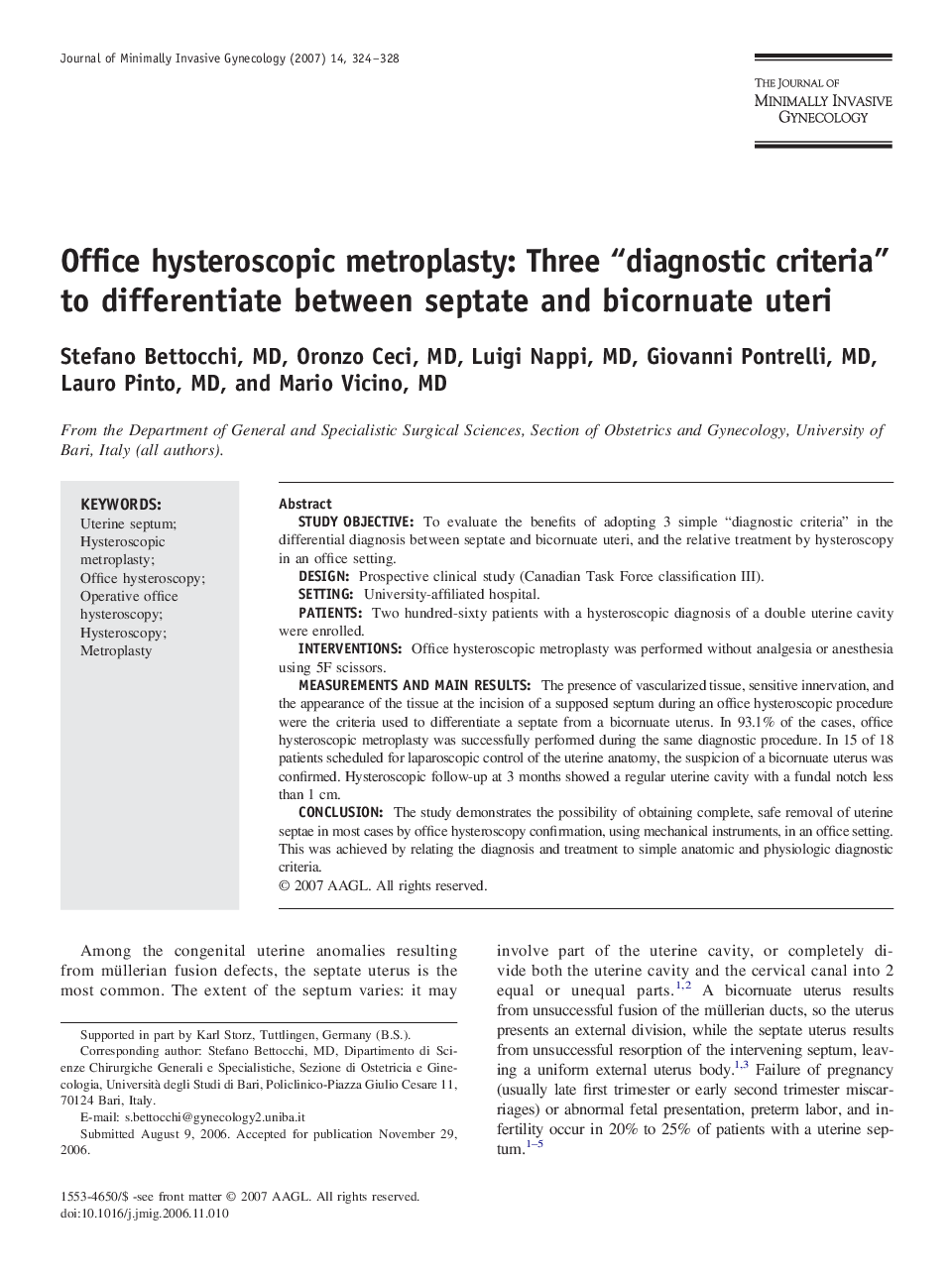| Article ID | Journal | Published Year | Pages | File Type |
|---|---|---|---|---|
| 3960022 | Journal of Minimally Invasive Gynecology | 2007 | 5 Pages |
Study objectiveTo evaluate the benefits of adopting 3 simple “diagnostic criteria” in the differential diagnosis between septate and bicornuate uteri, and the relative treatment by hysteroscopy in an office setting.DesignProspective clinical study (Canadian Task Force classification III).SettingUniversity-affiliated hospital.PatientsTwo hundred-sixty patients with a hysteroscopic diagnosis of a double uterine cavity were enrolled.InterventionsOffice hysteroscopic metroplasty was performed without analgesia or anesthesia using 5F scissors.Measurements and Main ResultsThe presence of vascularized tissue, sensitive innervation, and the appearance of the tissue at the incision of a supposed septum during an office hysteroscopic procedure were the criteria used to differentiate a septate from a bicornuate uterus. In 93.1% of the cases, office hysteroscopic metroplasty was successfully performed during the same diagnostic procedure. In 15 of 18 patients scheduled for laparoscopic control of the uterine anatomy, the suspicion of a bicornuate uterus was confirmed. Hysteroscopic follow-up at 3 months showed a regular uterine cavity with a fundal notch less than 1 cm.ConclusionThe study demonstrates the possibility of obtaining complete, safe removal of uterine septae in most cases by office hysteroscopy confirmation, using mechanical instruments, in an office setting. This was achieved by relating the diagnosis and treatment to simple anatomic and physiologic diagnostic criteria.
